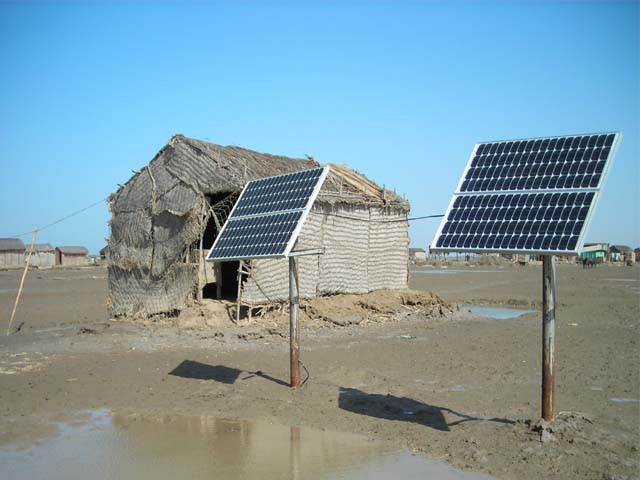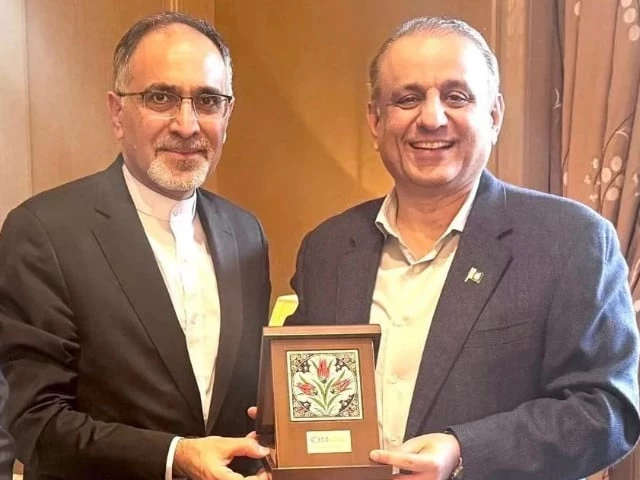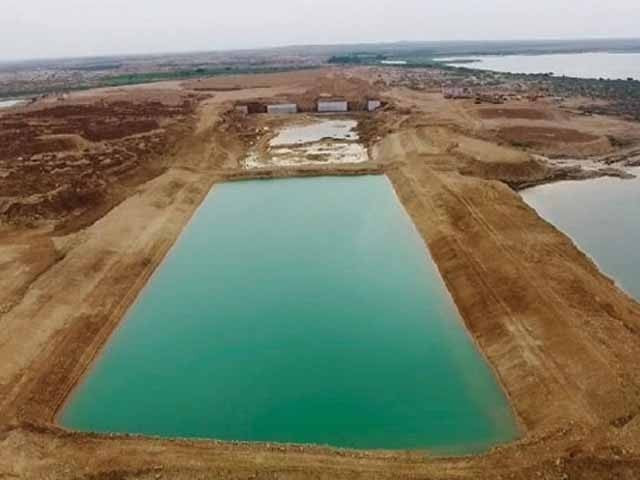Business
From ‘cheap food and curry houses’ to upscale dining: The rise of Indian restaurants in the U.S.

Semma restaurant in New York, NY.
Courtesy: Steven Hall
Executive Chef Vikas Khanna has plated hundreds of thousands of dinners over the past 20 years — and he’s seen firsthand just how much Indian cuisine has evolved in the U.S.
Khanna, a world-renowned Indian restaurateur, created Junoon, his high-end Indian restaurant in New York City, more than a decade ago to wade deeper into sophisticated Indian dining, ultimately earning a Michelin star for the restaurant — one of the first Indian restaurants to earn the distinction.
As an immigrant in a post-9/11 America, Khanna said his bosses early in his career had been hesitant to branch out and experiment deeper with the broad canvas of Indian cuisine. Instead, he stuck to what he knew worked for the American palette: stereotypical menus and flavors like butter chicken and tikka masala.
But when American chef Anthony Bourdain visited Junoon for the first time, Khanna said he got the wakeup call of his career.
“He said, ‘I don’t understand why you guys want to camouflage your food to please the Western world,'” Khanna told CNBC. “He was saying, ‘You need to patronize the cuisine.’ And that became the foundation of Bungalow in many ways.”
Bungalow, Khanna’s next and highly popular venture in New York, is one of a growing number of Indian upscale and fine-dining restaurants popping up in the U.S. What was once takeout menus and buffets, Khanna said, has transformed into a business segment aiming to rival that of Italian and French cuisine and is garnering growing interest by the day.
According to Jimmy Rizvi, Khanna’s business partner at Bungalow, reservations for the restaurant sell out within 30 to 90 seconds of going live, with nightly waitlists averaging more than 1,000 people. The restaurant opened less than two years ago but consistently serves 300 to 400 dinners each night, becoming a top 10 restaurant in New York City on reservations platform Resy, Rizvi said.
“I definitely think that there’s a knowledge base that’s increasing; there’s more awareness with Indian food,” Rizvi, who also owns the restaurant Gupshup, told CNBC. “And there’s different cuisines within the Indian cuisine … that people are getting aware about.”
Bungalow’s Chef, Vikas Khanna.
Courtesy: Jimmy Rizvi
Tracking the rise
Khanna, who has been in the American restaurant scene for more than two decades, said he’s seen the entire landscape shift from “cheap food and curry houses” to sophisticated sit-down establishments.
Fine dining overall has seen a significant upswing over the past few years, Circana foodservice analyst David Portalatin told CNBC, as a post-pandemic appetite for a dining experience beyond just food has seen a boom.
Despite macroeconomic pressure with inflation and a pullback in consumer spending, Portalatin said customer visits to fine dining restaurants in July were up 5% year-over-year.
“One of the bright spots across the restaurant landscape right now is fine dining,” he said. “It’s evidence that the American consumer is once again desiring these unique and differentiated experiences outside the home.”
Along with that, Portalatin said younger consumers, like Generation Z and millennials, have a growing interest in global dishes with their “quest for flavors.” That opens the door for exploring cuisines like Indian food.
According to data from market research firm Datassential, new Indian restaurant openings in December 2024 hit 115, up from just 54 in September 2018. Currently, the firm counts 154 upscale Indian dining restaurants in the U.S. compared with 101 in January 2018.
Bungalow restaurant in New York, NY.
Courtesy: Jimmy Rizvi
Resy CEO Pablo Rivero told CNBC that he’s also seen demand for high-end Indian restaurants widen over the past few years.
“Modern Indian restaurants are redefining the category with ambitious menus and inventive formats — and diner demand for these elevated experiences shows no signs of slowing down,” Rivero said. “It’s a clear sign that diners are eager to explore experience-driven, innovative expressions of Indian cuisine at the highest level.”
And while growing American interest in global cuisines has taken off, the Indian American population has also mirrored that growth. According to the Pew Research Center, the Indian population in the U.S. has increased by roughly 3.1 million, growing about 174% since 2000.
That population has also seen a rise in affluence, making a high median household income of more than $151,000 in 2023, compared with just a median of over $105,000 for Asian American households overall, according to Pew.
Growing investor interest
As reservations at Indian restaurants begin to sell out even faster, investors are also looking to secure a seat at the table.
Just this month, popular U.K. Indian restaurant chain Dishoom gained private equity backing as it prepares to scale to the U.S. next year.
L Catterton, backed by LVMH, announced it was acquiring a minority stake for an undisclosed amount in Dishoom, marking the restaurant group’s first outside investment. The firm adds Dishoom to its growing slate of restaurant investments, including Japanese Kobe beef chain Kisshokichi and Spanish casual dining brand Goiko.
The new deal reportedly values the restaurant at roughly $400 million. L Catterton and Dishoom did not respond to CNBC’s requests for comment.
Bungalow’s Indian cuisine in New York City.
Courtesy: Jimmy Rizvi
Roni Mazumdar, with the James Beard Award-winning Indian restaurant Semma, said he’s seen a direct increase in investor interest as upscale Indian restaurants have boomed over the past few years.
Unapologetic Foods — the company behind many popular New York restaurants including Semma, Dhamaka, Adda and more — is having “continuous conversations” with outside investors, Mazumdar told CNBC, but even having those talks marks a significant change from when the group first entered the restaurant scene.
“I don’t think anyone saw Indian cuisine as a viable option until now,” Mazumdar said. “There are folks who we have consistent dialogues with who I don’t think five years ago would have even thought about the idea of, ‘Oh, it could be an interesting business model to look at.'”
Mazumdar said the landscape is “shifting rapidly” as more investors take notice.
“I wouldn’t call this a trend,” he added. “To take one of the oldest cuisines in the world – I think it’s an inevitability. It’s a matter of time.”
Emphasizing regional specificity
The Indian Restaurant Association of America identified hyper-regional flavors as one of its top 2025 Indian restaurant trends as chefs dig into the hundreds of local cuisines that dot the subcontinent.
Each of the restaurants from Mazumdar and Unapologetic Foods Chef Chintan Pandya, including Semma, emphasizes regional cuisines, rather than the typical northwestern Indian menus of decades past.
“I think we see a very interesting pattern where there’s a sense of curiosity towards finding out what a community is about through the lens of food,” Mazumdar said. “And I don’t think 20 years ago that was the case.”
Semma, for example, which was ranked No. 1 on The New York Times’ 2025 best restaurants list, explores the cuisine of South India, specifically the state of Tamil Nadu.
“I think one of the glorifying reasons that Semma is doing insanely great or something path-breaking is because it touches that nerve of Indian food which is cooked in India,” Pandya said. “That’s the entire belief, or the standard, or the vision of our company, where we will touch and cook the actual Indian food which we ourselves love to eat.”
Semma restaurant in New York, NY.
Courtesy: Steven Hall
Avtar Walia, the owner of Tamarind in Tribeca, has been in the American restaurant scene for decades. When he first immigrated to America in the ’70s, he couldn’t figure out why Indian restaurants weren’t at the same level as Italian and French restaurants.
By adding in more regional dishes and classic Indian street food, Walia said he began to see Indian restaurants — including his own eateries — change from typical buffets to sleek, elegant dining.
“From the last 47 years, I still follow the same pattern. Every month, month and a half, I change my lunch menu,” Walia said. “We take one of the regions … so that people can try different dishes, authentic dishes, and they don’t have to go anywhere else. And this worked very well for me.”
Walia estimated that nearly 95% of his clientele are regulars, with his restaurant becoming a staple for Wall Street business meetings.
And for Khanna over at Bungalow, the lines outside the restaurant just keep getting longer.
His rattan chairs have seated famed Indian celebrities like members of India’s billionaire Ambani family and Bollywood stars, as well as American bigwigs like Amazon founder Jeff Bezos, who visited the restaurant last year.
“When he came, he kept saying, ‘I know why every Indian in Seattle is on the phones at 8 a.m. PT to snag a reservation, because for them, this is not just visiting a restaurant — it’s a pilgrimage back home,'” Khanna said. “And that really stayed with me.”
Business
Peel Hunt cheers ‘positive steps’ in Budget to boost London market and investing

UK investment bank Peel Hunt has given some support to under-pressure Chancellor Rachel Reeves over last week’s Budget as it said efforts to boost the London market and invest in UK companies were “positive steps”.
Peel Hunt welcomed moves announced in the Budget, such as the stamp duty exemption for shares bought in newly listed firms on the London market and changes to Isa investing.
It comes as Ms Reeves has been forced to defend herself against claims she misled voters by talking up the scale of the fiscal challenge in the run-up to last week’s Budget, in which she announced £26 billion worth of tax rises.
Peel Hunt said: “Following a prolonged period of pre-Budget speculation, businesses and investors now have greater clarity from which they can start to plan.
“The key measures were generally well received by markets, particularly the creation of additional headroom against the Chancellor’s fiscal rules.
“Initiatives such as a stamp duty holiday on initial public offerings (IPOs) and adjustments to the Isa framework are intended to support UK capital markets and encourage investment in British companies.
“These developments, alongside the Entrepreneurship in the UK paper published simultaneously, represent positive steps toward enhancing the UK’s attractiveness for growth businesses and long-term investors.”
Ms Reeves last week announced a three-year stamp duty holiday on shares bought in new UK flotations as part of a raft of measures to boost investment in UK shares.
She also unveiled a change to the individual savings account (Isa) limit that lowers the cash element to £12,000 with the remaining £8,000 now redirected into stocks and shares.
But the Chancellor also revealed an unexpected increase in dividend tax, rising by 2% for basic and higher rate taxpayers next year, which experts have warned “undermines the drive to increase investing in Britain”.
Peel Hunt said the London IPO market had begun to revive in the autumn, although listings activity remained low during its first half to the end of September.
Firms that have listed in London over recent months include The Beauty Tech Group, small business lender Shawbrook and tinned tuna firm Princes.
Peel Hunt added that deal activity had “continued at pace” throughout its first half, with 60 transactions announced across the market during that time and 10 active bids for FTSE 350 companies, as at the end of September.
Half-year results for Peel Hunt showed pre-tax profits jumped to £11.5 million in the six months to September 30, up from £1.2 million a year earlier, as revenues lifted 38.3%.
Peel Hunt said its workforce has been cut by nearly 10% since the end of March under an ongoing savings drive, with full-year underlying fixed costs down by around £5 million.
Steven Fine, chief executive of Peel Hunt, said: “The second half has started strongly, with the group continuing to play leading roles across both mergers and acquisitions and equity capital markets mandates.”
Business
Gross GST collections for November stand at over Rs 1.70 lakh crore; up 0.7 per cent – The Times of India

GST collections: The Gross Goods and Services Tax (GST) collections for the month of November came in at over Rs 1.70 lakh crore. This is a rise of 0.7%, according to official data.SBI Research in a report in November had estimated that the gross domestic GST collections may come around Rs 1.49 lakh crore for November 25 (returns of October 25 but filed in Nov’25), a YoY growth of 6.8%.“Coupled with Rs 51,000 crore of IGST and cess on Import, the November GST collections thus could cross Rs 2.0 lakh crore, driven by the peak festive season demand led by lower GST rate and increased compliance while most of states experience positive gains,” SBI Research had said.This story is being updated
Business
Key Financial Deadlines That Have Been Extended For December 2025; Know The Last Date

New Delhi: Several crucial deadlines have been extended in December 2025, including ITR for tax audit cases, ITR filing and PAN and Aadhaar linking. These deadlines will be crucial in ensuring that your financial affairs operate smoothly in the months ahead.
Here is a quick rundown of the important deadlines for December to help you stay compliant and avoid last-minute hassles.
ITR deadline for tax audit cases
The Central Board of Direct Taxes has extended the due date of furnishing of return of income under sub-Section (1) of Section 139 of the Act for the Assessment Year 2025-26 which is October 31, 2025 in the case of assessees referred in clause (a) of Explanation 2 to sub-Section (1) of Section 139 of the Act, to December 10, 2025.
Belated ITR filing deadline
A belated ITR filing happens when an ITR is submitted after the original due date which is permitted by Section 139(4) of the Income Tax Act. Filing a belated return helps you meet your tax obligations, but it involves penalties. You can only file a belated return for FY 2024–25 until December 31, 2025. However, there will be a late fee and interest charged.
PAN and Aadhaar linking deadline
The Income Tax Department has extended the deadline to link their PAN with Aadhaar card to December 31, 2025 for anyone who acquired their PAN using an Aadhaar enrolment ID before October 1, 2024. If you miss this deadline your PAN will become inoperative which will have an impact on your banking transactions, income tax return filing and other financial investments.
-

 Sports1 week ago
Sports1 week agoWATCH: Ronaldo scores spectacular bicycle kick
-

 Entertainment1 week ago
Entertainment1 week agoWelcome to Derry’ episode 5 delivers shocking twist
-

 Politics1 week ago
Politics1 week agoWashington and Kyiv Stress Any Peace Deal Must Fully Respect Ukraine’s Sovereignty
-

 Business1 week ago
Business1 week agoKey economic data and trends that will shape Rachel Reeves’ Budget
-

 Tech6 days ago
Tech6 days agoWake Up—the Best Black Friday Mattress Sales Are Here
-

 Politics1 week ago
Politics1 week ago53,000 Sikhs vote in Ottawa Khalistan Referendum amid Carney-Modi trade talks scrutiny
-

 Fashion1 week ago
Fashion1 week agoCanada’s Lululemon unveils team Canada kit for Milano Cortina 2026
-

 Tech6 days ago
Tech6 days agoThe Alienware Aurora Gaming Desktop Punches Above Its Weight


1729471601-0/image-(8)1729471601-0-640x480.webp)








